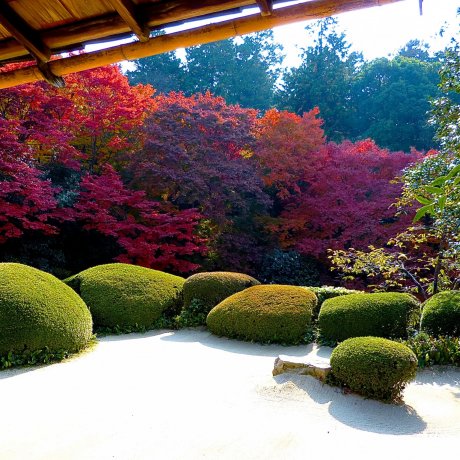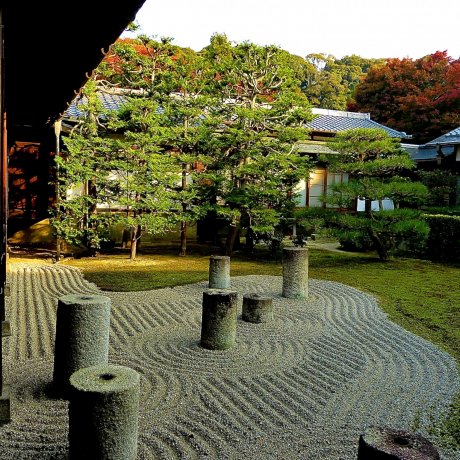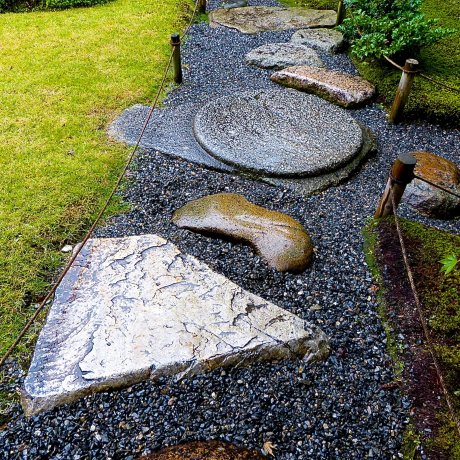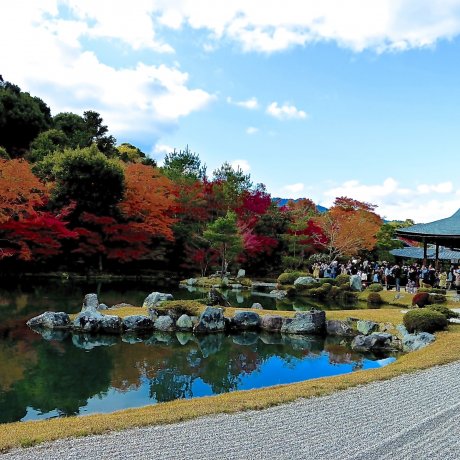
Kyoto Shisen-do Villa
Tomoko KamishimaThe autumn beauty at Shisen-do Villa is amazing, with a garden sparkling with bright red maples. This was once a residence of a..

Kyoto was the capital of Japan for over 1000 years (794-1867). It is famous for its temples and gardens, of which there are three main types (although some gardens combine styles):
Dry gardens use rocks and sand for the expression of water. They are generally designed to be enjoyed from a room.
Excursion style gardens usually include a walk around a pond. We can enjoy different views during the walk.
Abstract style gardens are quite modern but still follow some garden traditions.
The first garden in Kyoto originated at Shinsen-en Garden. Gardens evolved over a long period of time into the three styles mentioned above.
In this series, Tomoko Kamishima introduces some master garden planners (gardeners/landscape architects), and some of the gorgeous Japanese gardens they designed in Kyoto:
Priest Muso Soseki (1275-1351): Tenryu-ji’s Hojo Garden (Excursion style garden)
Kobori Enshu (1579-1647): Konchi-in’s Tsuru-Kame Garden (Dry garden)
Ishikawa Jozan (1583-1672): Shisen-do Villa (Dry garden/Excursion style garden)
Ueji VII (1860-1933): Murin-an Villa (Excursion style garden)
Shigemori Mirei (1896-1975): Tofuku-ji’s Hojo Garden (Abstract style garden)
The autumn beauty at Shisen-do Villa is amazing, with a garden sparkling with bright red maples. This was once a residence of a..
The designer and planner of this garden (which was built in 1939), Shigemori Mirei, called them 'concept gardens containing..
Murin-an Villa was once the private villa of a powerful politician, Aritomo Yamagata. It is located near Nanzen-ji Temple, in the..
Kyoto's Konchi-in Temple Garden was designed by Kobori Enshu (1579-1647) in around 1630, but it was a talented gardener na..
In Kyoto's Arashiyama, the landscape of cherry blossoms and autumn leaves are very special, although this district attract..



